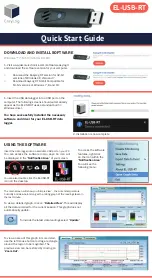
Interfaces
19
Each instrument has to have a unique IP address to connect to a net-
work. If the number of instruments connecting to a network increases, it
will become quite difficult to manually assign a unique IP address to
each instrument.
To avoid this difficulty, DHCP (Dynamic Host Configuration Protocol) is
now widely used. DHCP is a protocol for assigning dynamic IP
addresses to instruments on a network.
With a DHCP server on the network, when the server is enabled, IP
addresses, subnet masks, and other network settings will be automati-
cally assigned to the instruments.
The
[Obtain an IP address automatically]
option in
[TCP/IP]-[IP
Address of Network]
dialog box in Windows 95/98/Me/2000 uses
DHCP.
The TCP/IP protocol used by this instrument for LAN communications
uses IP addresses to identify each instrument. Version 4 (IPv4) standard
IP addresses consist of 32-bit numerical values, normally indicated as
four decimal octets (8-bit values) separated by decimals, such as
192.168.1.1.
Set an IP address distinct from the addresses of other instruments on
the network, as with the host name.
When DHCP is enabled, an IP address will be automatically assigned.
DHCP (Dynamic Host Configuration Protocol)
IP address
















































